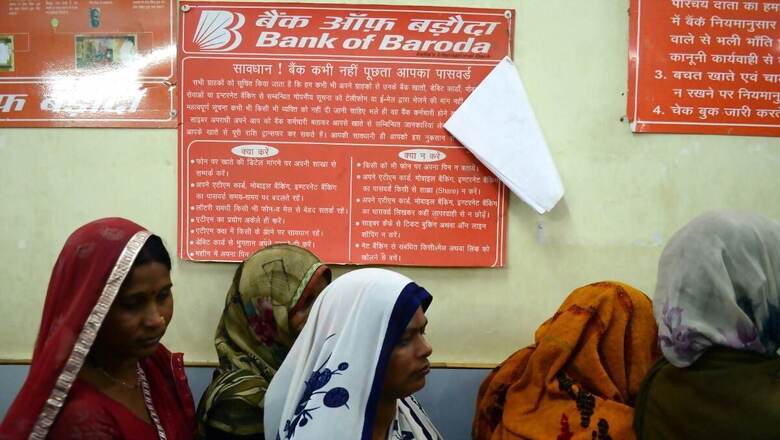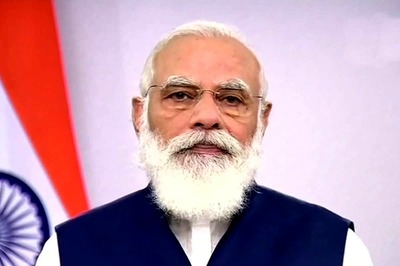
views
It is the 10th anniversary of the Pradhan Mantri Jan Dhan Yojana (PMJDY) programme, which was announced by Prime Minister Narendra Modi on August 15, 2014, from the ramparts of the Red Fort. As a scheme for financial inclusion and gradual financial literacy among people who previously did not have access to bank accounts, it is nothing short of revolutionary. The programme is designed to impart dignity and empower the unbanked poor. In practice, it has particularly resonated with grassroots women entrepreneurs, who have embraced the formal banking system in a significant way. Due to their financial responsibility and discipline in borrowing and repayment, they have emerged as some of the programme’s biggest beneficiaries.
One could open a Jan Dhan Account, if necessary, with zero balance and no questions asked. All the public sector unit (PSU) banks participated in mission mode, responding to the prime minister’s call. When the programme was first introduced, lakhs of accounts were opened in a single day. Once these bank accounts were established, they offered overdrafts and loans over time to people with no collateral or references beyond their own track record.
After a decade of operations, there are 53.13 crore accounts under the Pradhan Mantri Jan Dhan Yojana (PMJDY), with Rs 2,31,000 crore deposited in them. Notably, 55.6 per cent of these accounts belong to women, who were able to open them independently, without needing a male guarantor. The average balance in these accounts is now around Rs 4,300. According to the Ministry of Finance, two-thirds of these accounts are located in rural and semi-urban areas, underscoring the programme’s reach.
The overall financial inclusion rate, defined by owning and using a proper bank account, has surged from 25 per cent of the adult population in 2008 to 80 per cent today. This achievement in just a decade is considered phenomenal, especially given that India’s adult population now exceeds a billion people.
These plain savings accounts have been utilised over the decade for direct benefit transfers from the government, effectively eliminating the leakages caused by middlemen in the past. They have been instrumental in distributing financial assistance during crises like the Covid pandemic, as well as facilitating subsidies under the PM-KISAN programme, disbursing wages under MGNREGA, and providing life and health insurance coverages free of charge by the government.
The processes involved have been significantly aided by the government-induced digital revolution in recent years. RU Pay debit cards, approximately 36 crores of them, were issued to these account holders. UPI transactions have skyrocketed, surpassing Rs 13,000 crore. The ubiquitous Aadhaar card for identity verification, linked to the widespread use of mobile phones, has further facilitated these processes. Numerous other government programmes, such as MUDRA loans for the MSME sector, use Jan Dhan accounts as the foundation for transactions.
Prime Minister Narendra Modi has pointed out that during the Congress-led government under Indira Gandhi, many banks were nationalised in the name of socialism, ostensibly to help the poor. However, despite these efforts, the target audience remained unbanked for decades.
This NDA government, along with the prime minister, is acutely aware that around 80 per cent of all employment in India is in the informal sector, characterised by low wages and inadequate benefits. However, there is a strong aspiration among workers to transition to the formal employment sector. In response, the government has placed renewed emphasis on apprenticeship and skill development, with an allocation of over Rs 2 trillion in the recent Union Budget of July 2024. These funds will provide internship opportunities and other incentives to both prospective employers and those seeking formal sector jobs. These new initiatives, in conjunction with the Jan Dhan Yojana, are significant efforts to address the needs of those at the bottom of the pyramid.
The success of the Jan Dhan Yojana has garnered admiration and study from other governments around the world. The innovative thinking and digitisation revolution that has driven its success are also enabling India to catch up with the developed West in various other domains. The sheer scale of the population involved would have made any manual process take decades, but the implementation via a biometric-enabled identity card like Aadhaar has been key.
That was also an early revolution under the Modi regime, harnessing India’s IT prowess, led by the current Infosys Non-Executive Chairman Nandan Nilekani. It’s worth noting that Nilekani has recently coined a new term, ‘Fininternet,’ which refers to the integration of real-time financial information from multiple sources and parameters, with the World Wide Web. The purpose? To enable better-informed decision-making, of course. How many of the Jan Dhan Yojana beneficiaries, once overlooked, will embrace this innovation when it arrives?
The writer is a Delhi-based political commentator. Views expressed in the above piece are personal and solely those of the author. They do not necessarily reflect News18’s views.



















Comments
0 comment